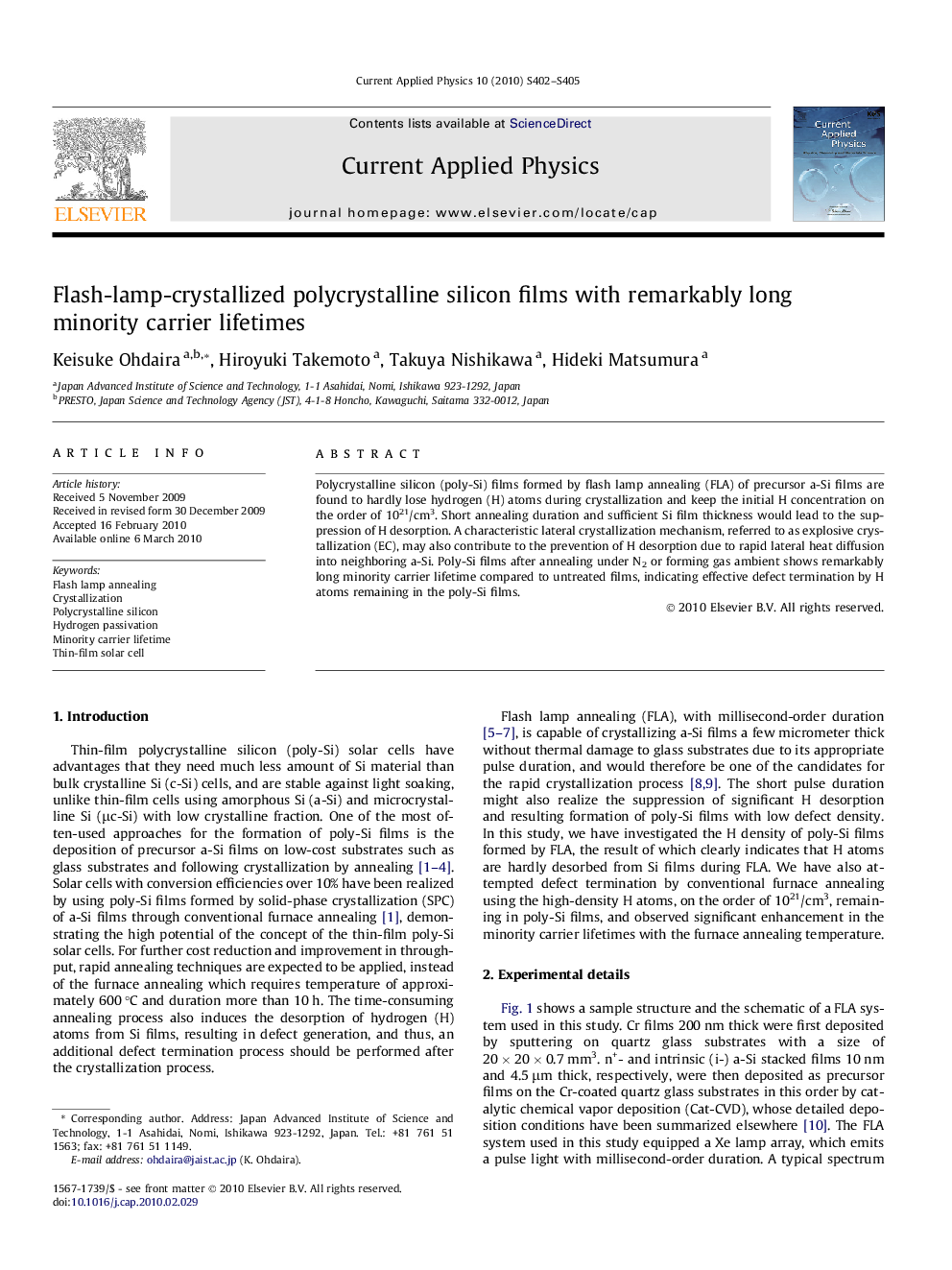| Article ID | Journal | Published Year | Pages | File Type |
|---|---|---|---|---|
| 1788786 | Current Applied Physics | 2010 | 4 Pages |
Polycrystalline silicon (poly-Si) films formed by flash lamp annealing (FLA) of precursor a-Si films are found to hardly lose hydrogen (H) atoms during crystallization and keep the initial H concentration on the order of 1021/cm3. Short annealing duration and sufficient Si film thickness would lead to the suppression of H desorption. A characteristic lateral crystallization mechanism, referred to as explosive crystallization (EC), may also contribute to the prevention of H desorption due to rapid lateral heat diffusion into neighboring a-Si. Poly-Si films after annealing under N2 or forming gas ambient shows remarkably long minority carrier lifetime compared to untreated films, indicating effective defect termination by H atoms remaining in the poly-Si films.
